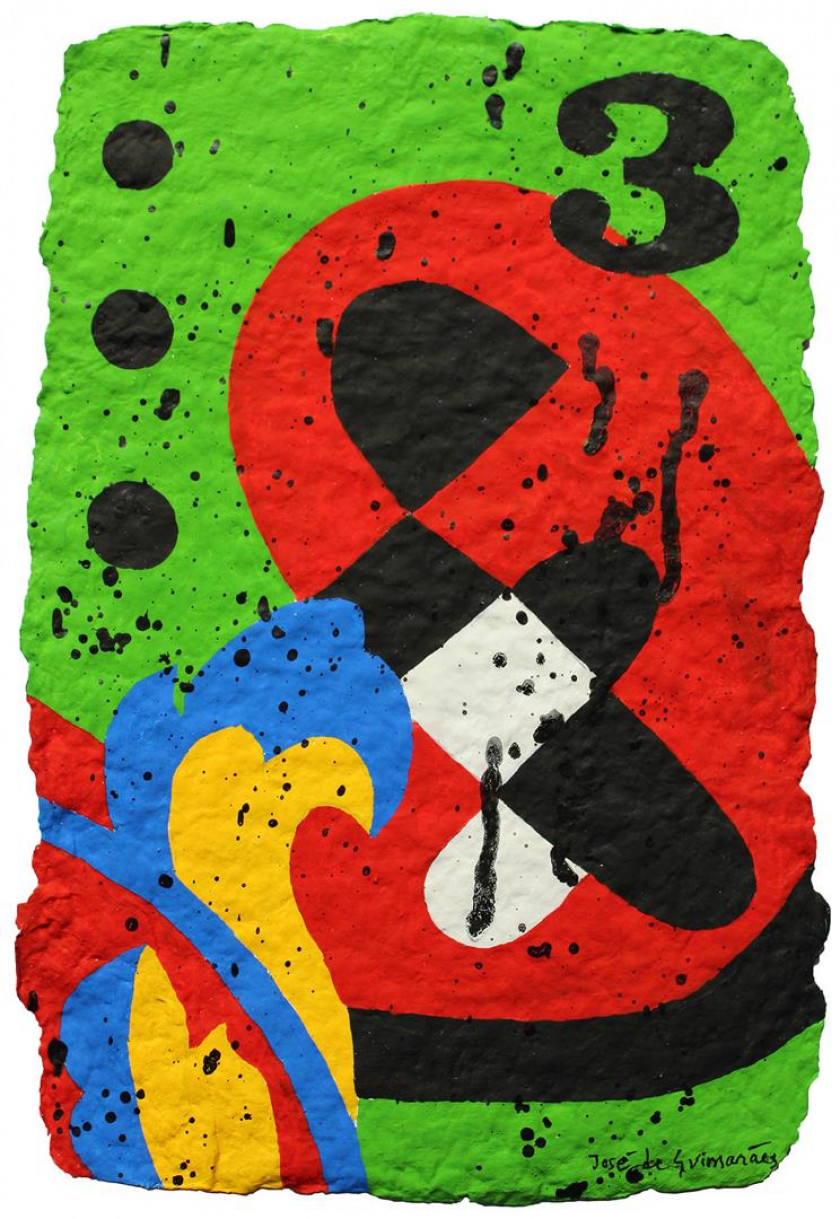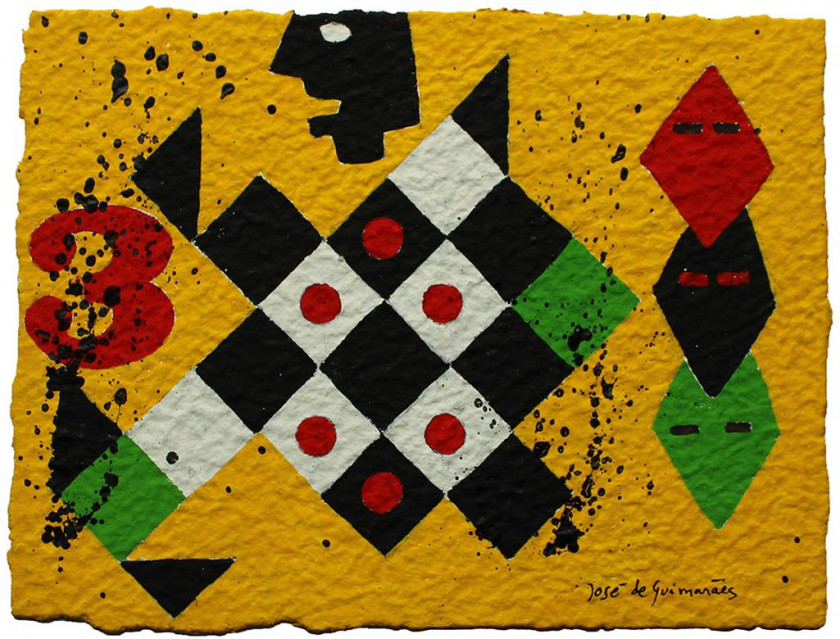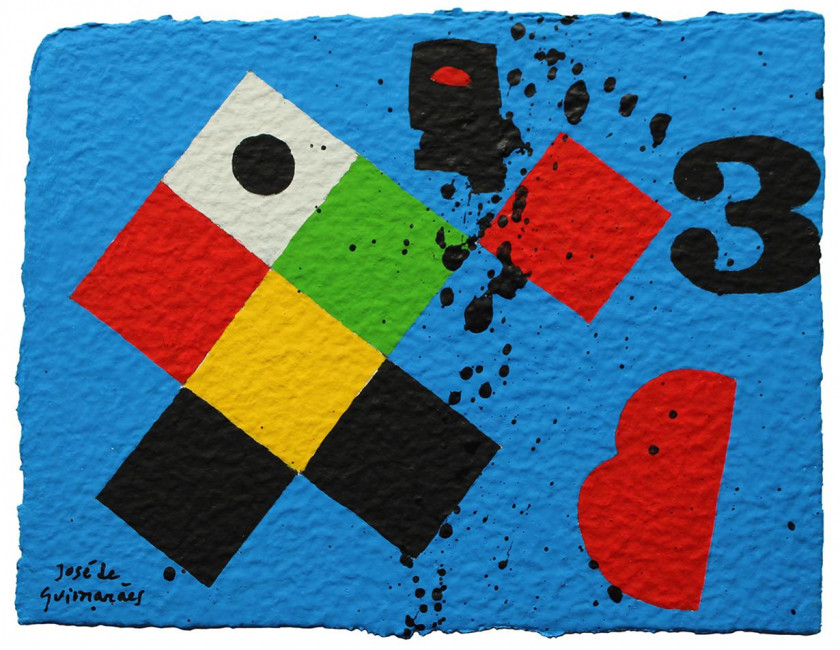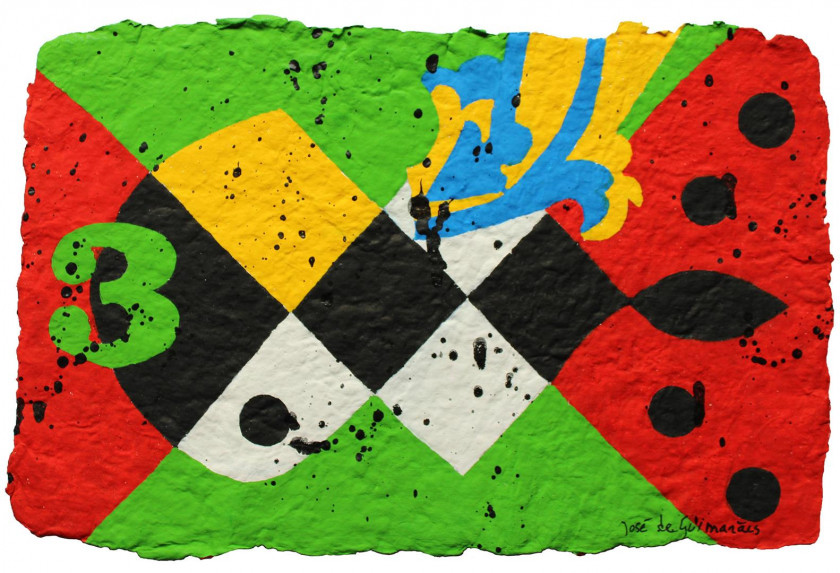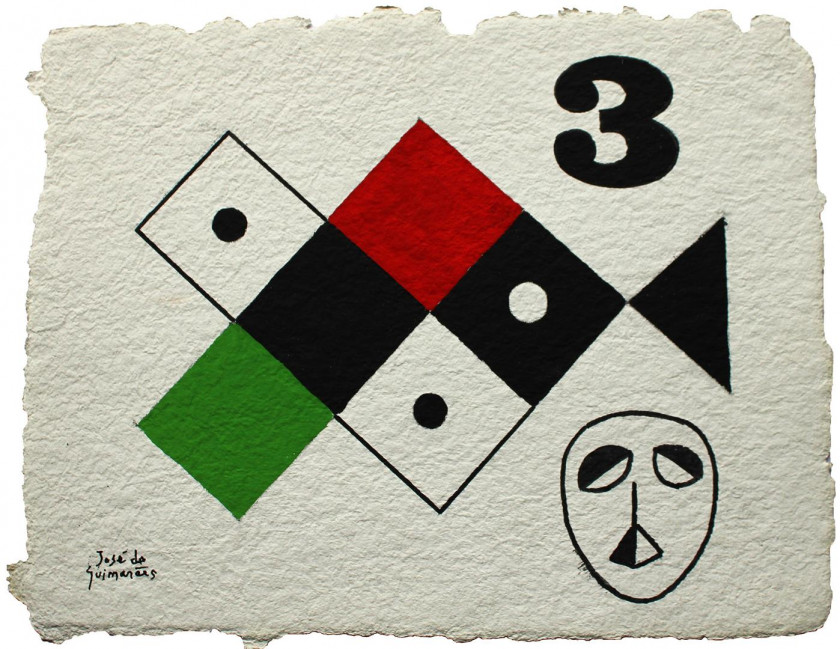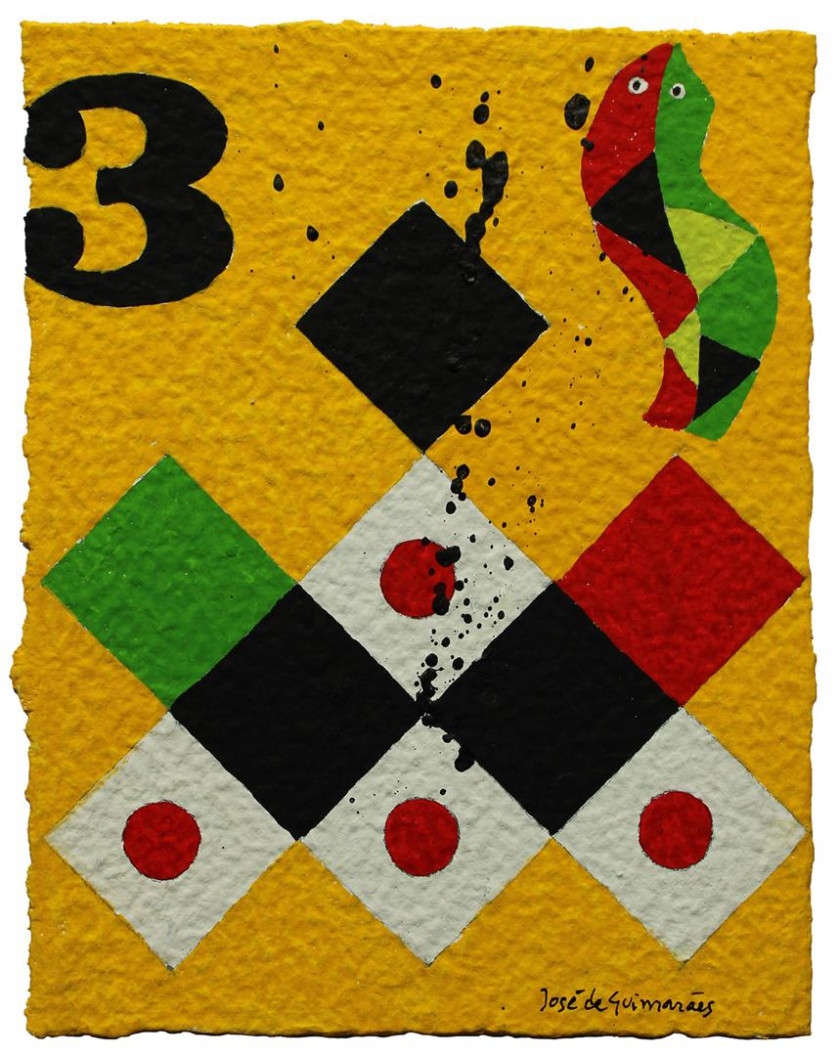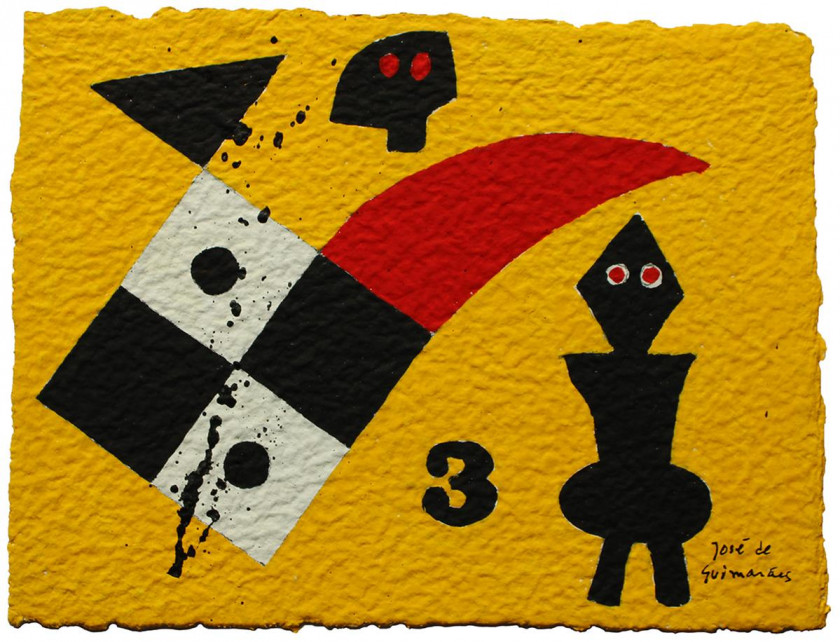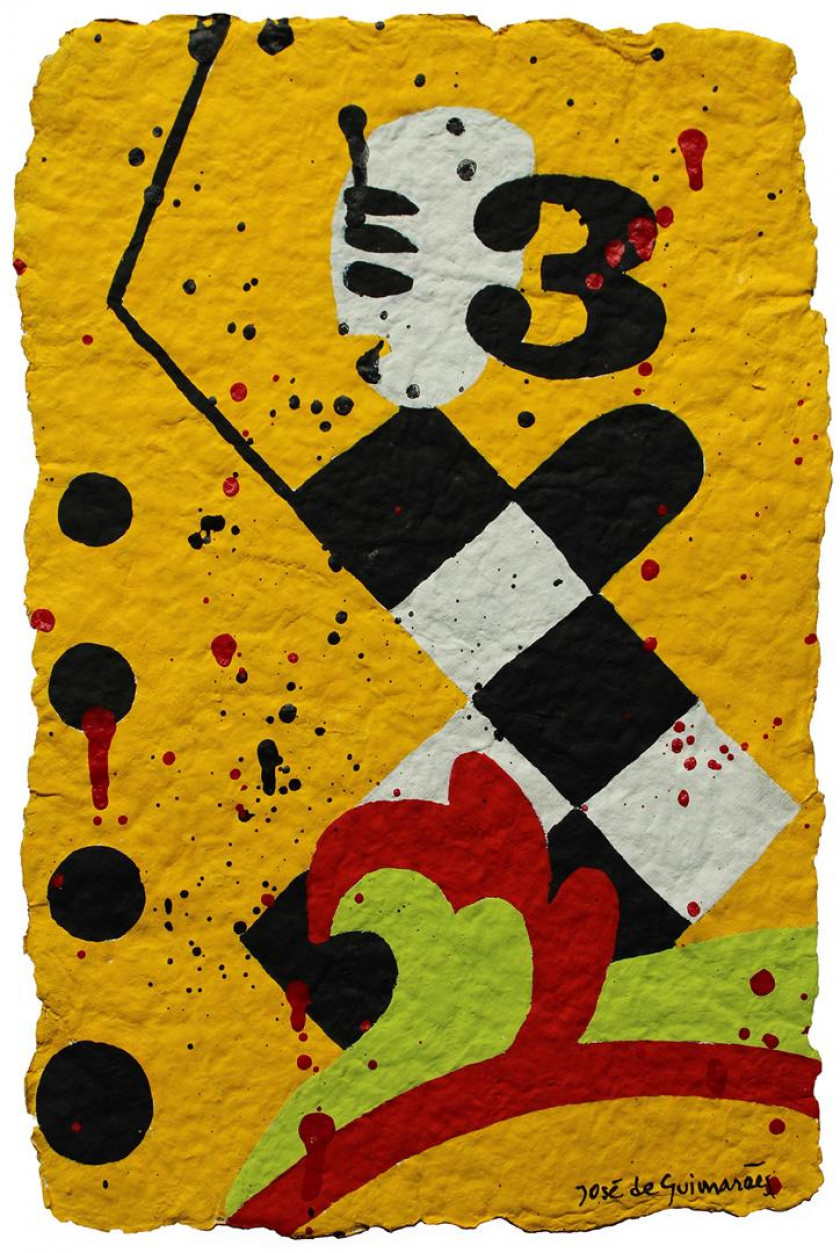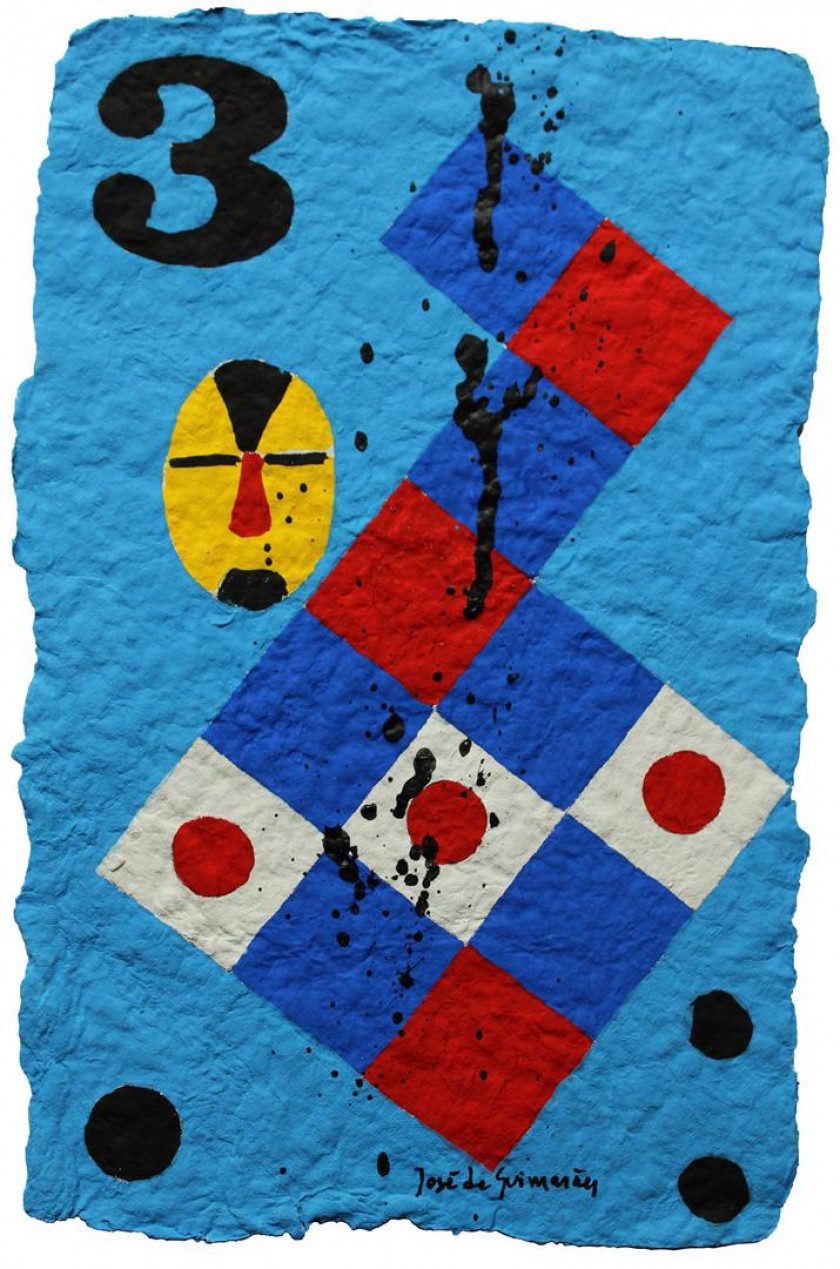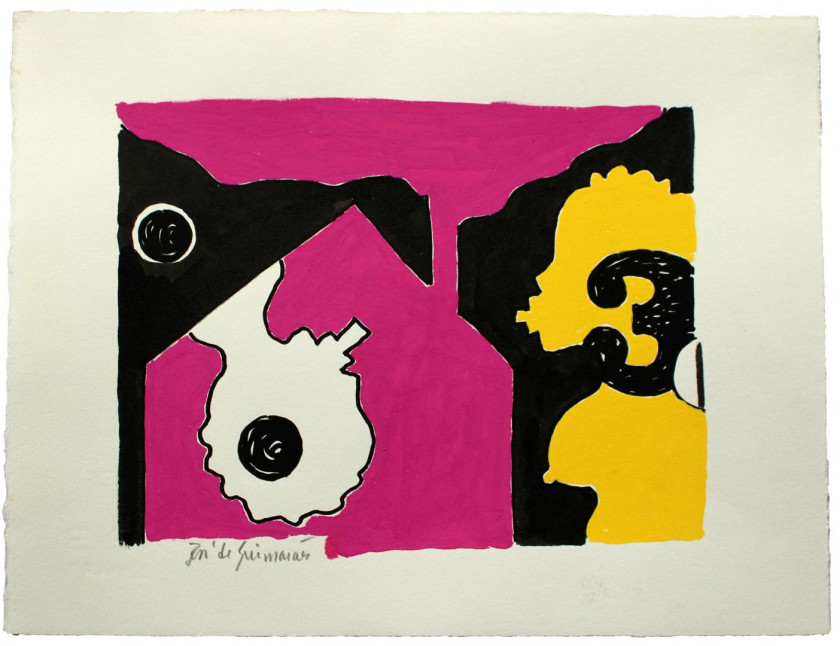Eva [Eve]
sculpture
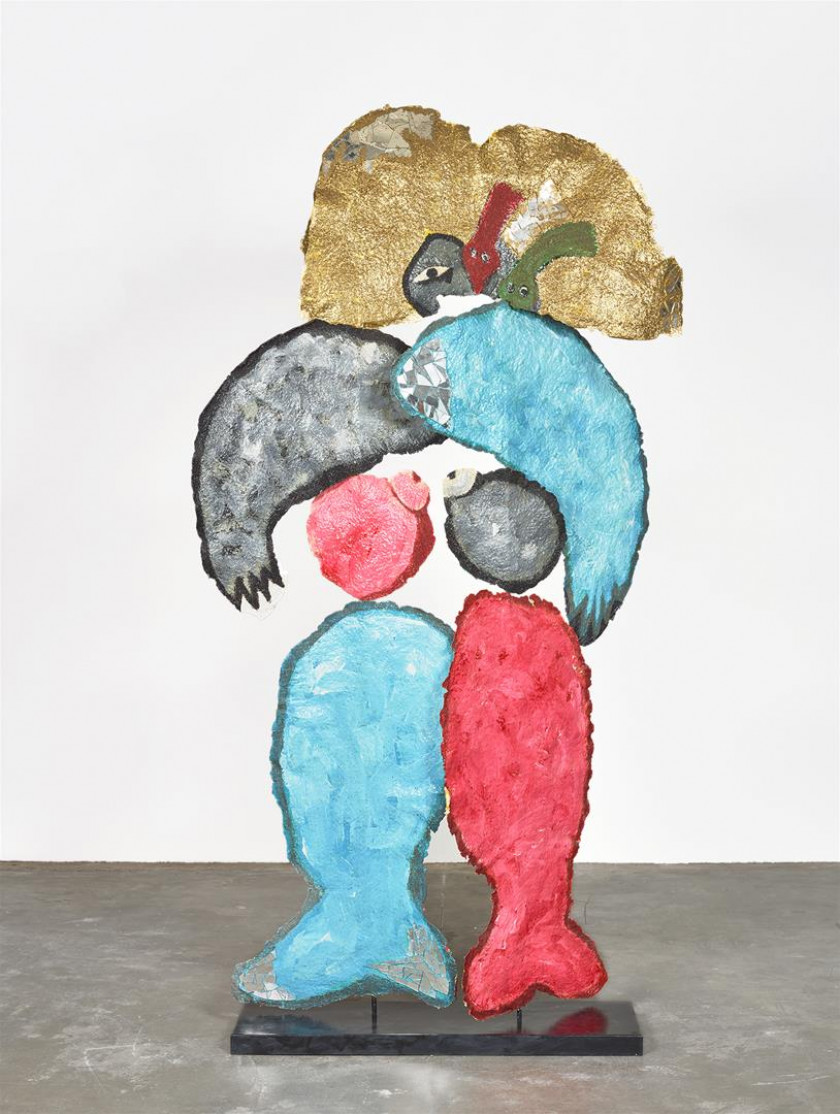

1986
Cellulose paste, acrylic paint, polyester resin and aluminum tubes
245,5 x 125 x 30,5 cm
Marked by the impact that African art, art brut, and pop art had on his imaginary and artistic lexicon, in the early 1980s José de Guimarães began to create his picto-sculptures. Eve is one of these objects, made of a type of thick, granulated paper manufactured by the artist, painted on both sides and supported by a small metal base, which can be simultaneously considered two-dimensional and three-dimensional. Using the same iconic images of his Angolan-inspired alphabet of symbols of the 1970s, which was intended to be readable to all cultures, the figures of his picto-sculptures establish dialogues between ancient cultures and modernity, between African and European art, and are often metaphorical and/or allegorical. Built from the loose elements of the alphabet of symbols and painted using only the three primary colours and black, Guimarães's Eve presents forms that are simultaneously figurative and surreal; without a torso, only breasts, multicoloured and with a partially disfigured face from which a red serpent emerges, reinforcing the biblical allegory and recalling the original sin of temptation, desire, and disobedience. In an apparent quest to reposition the biblical creation myth, the artist creates his Eve with a multi-ethnic appearance and seems to want to free her from the constraints of European morality, moving her from the plane of simplistic confrontation between good and evil to one of construction and transformation, evidenced by her symbiosis with the serpent. As a reconstruction of the mythical symbol of the foundation of humanity, this piece translates, perhaps, the goal of all of Guimarães's work: to articulate the different components of a whole in order to make it universally accessible and understandable.
Ana Fabíola Maurício
